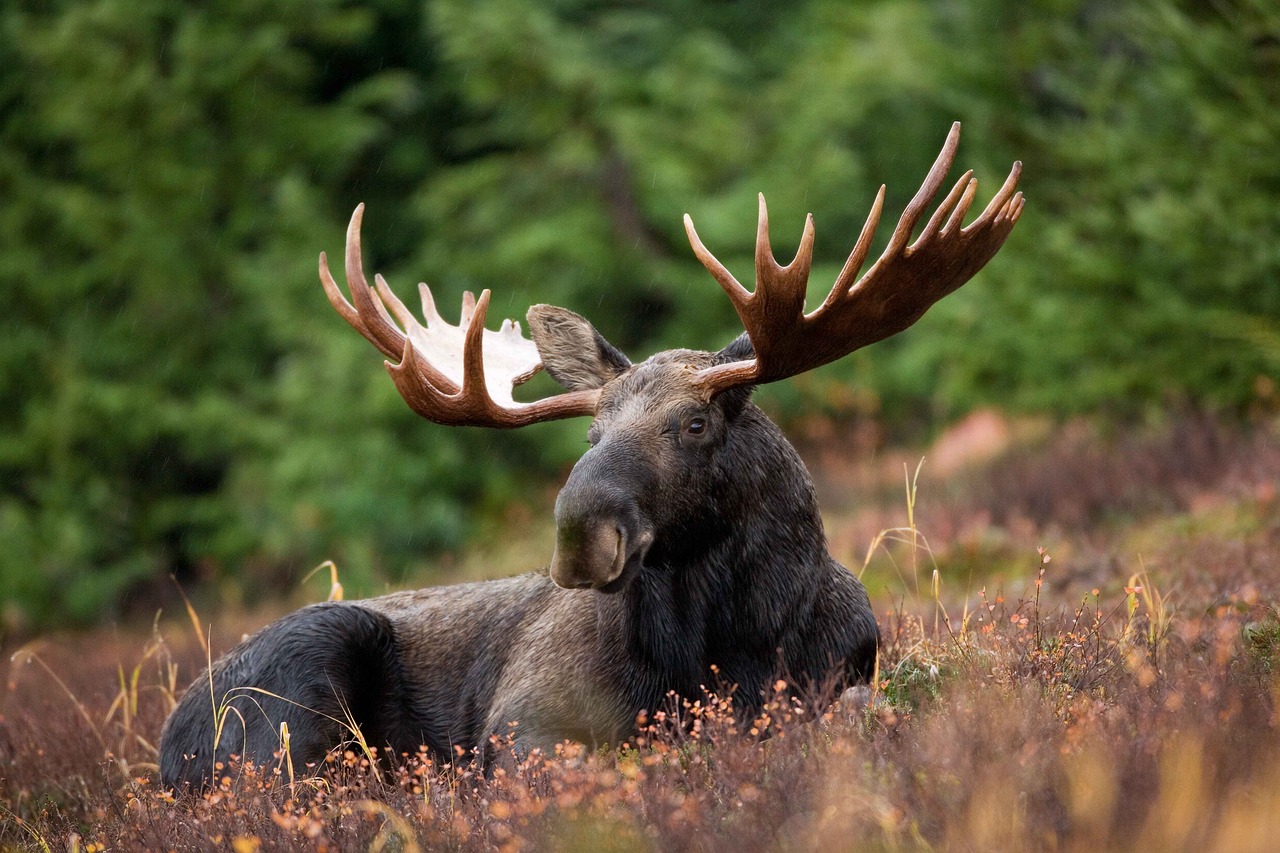Elk and moose are both majestic creatures found in the wild, but they have distinct differences. The main difference between elk and moose is their size. Elk, also known as wapiti, are smaller than moose and typically weigh between 500 to 700 pounds, while moose can reach a whopping 1,200 to 1,600 pounds! Additionally, their antlers differ in shape and size. Moose have broad antlers that resemble palm leaves, whereas elk possess long antlers with multiple branches or tines. So if you ever find yourself wondering about the difference between these magnificent animals, remember that it boils down to their size and unique antler characteristics. Keep reading to explore more differentiating features of elk versus moose!
Physical Differences
When comparing elk and moose, there are several key physical differences to consider:
-
Size: Moose are generally larger than elk in terms of both weight and height. Adult male moose can weigh between 900-1500 pounds, while adult male elk typically range from 700-1000 pounds. In terms of height at the shoulder, moose stand around 6-7 feet tall compared to elk which stand around 4-5 feet tall.
-
Antlers: One noticeable difference between the two species is their antlers. Male elk have branched antlers that form a symmetrical shape with multiple points or tines on each side. In contrast, male moose have palmate antlers that resemble a hand with broad flattened paddles.
-
Coloring: Elk usually have a light brown body with darker patches, whereas moose tend to be dark brown or black in color.
-
Head Shape: The head shape also differs between the two animals. Moose have a long and bulbous snout with a prominent overhanging upper lip called a “bell.” Elk, on the other hand, have narrower heads with pointed snouts.
-
Body Structure: Moose possess more massive bodies compared to elk due to their larger size overall. They also tend to exhibit humped shoulders and longer legs relative to their body length when compared to elk.
-
Behavioral Display: When it comes to mating behavior, males from both species engage in vocalizations and displays but differ in technique: Elk produce bugling sounds during rutting season while moose utilize grunting calls instead.
In conclusion, while both elk and moose share some similarities such as being members of the deer family (Cervidae), they display distinct physical characteristics that set them apart from one another.
Habitat and Range
Here are some key differences between the habitat and range of elk and moose:
-
Elk:
- Elk, also known as wapiti, prefer living in open woodlands, grasslands, and mountainous regions.
- They are commonly found in North America, including regions such as the Rocky Mountains, Appalachian Mountains, and Great Plains.
- Elks thrive in areas with a mixture of forests for cover and open spaces for grazing.
- They can adapt to various habitats ranging from high-elevation alpine meadows to low-lying valleys.
-
Moose:
- Moose tend to inhabit boreal forests near bodies of water like marshes, lakes, swamps or rivers.
- They have a wider distribution compared to elk; they can be found across Northern Europe (including Scandinavia), Russia, Alaska (USA), Canada’s northern provinces (such as British Columbia) along with parts of New England (USA).
- Due to their need for aquatic vegetation during feeding time and protection from predators by swimming away into rivers or lakes if necessary when threatened makes them strongly associated with wetland habitats
-
Overlapping Ranges:
While there may be regional overlap in certain areas where both species coexist:- In parts of North America like Colorado or Wyoming you may find both species sharing similar habitats,
- There might also be cases where elks tend towards more densely forested areas while moose favor wetter landscapes nearby.
It is important to note that these generalizations about habitat preferences may vary depending on factors such as climate change impacts on ecosystems availability/changes over time due human activity which could alter natural ranges. Keep this in mind when studying wildlife populations or planning outdoor activities involving these magnificent creatures!
Behavior and Diet
When it comes to behavior, there are several notable differences between elk and moose:
-
Social Structure:
- Elk: They typically live in herds, consisting of females and their offspring.
- Moose: These solitary creatures tend to roam alone or occasionally form small groups.
-
Territory:
- Elk: They prefer open meadows and grasslands for grazing.
- Moose: They thrive in forested areas near lakes or marshes where they can find their favorite aquatic plants.
-
Mating Season:
- Elk: During the rutting season, male elk engage in intense battles for dominance over a harem of females.
- Moose: Bulls use vocal calls and physical displays to attract mates during their mating season.
In terms of diet, both species have distinctive preferences:
-
Elk Diet:
- Grasses
- Shrubs
- Leaves from trees
- Fruits (when available)
-
Moose Diet:
- Aquatic plants (such as water lilies)
- Willow branches
- Alder shoots
- Other vegetation found near water sources
It’s important to note that while the diets may overlap on certain food items such as shrubs or leaves, moose primarily rely on aquatic plants which distinguishes them from elk who do not exhibit such preference.
Overall, understanding these behavioral differences and dietary preferences is crucial when studying these magnificent creatures in their natural habitats.
Conclusion
In conclusion, it is evident that there are several key differences between elk and moose. These two majestic creatures may belong to the same family, but their physical characteristics and habitats set them apart.
Firstly, when comparing size, the moose clearly outshines the elk. With its towering height and impressive antlers, the moose stands as a true giant among mammals. On the other hand, while still impressive in stature, elks are relatively smaller and lack the grandeur of their moose counterparts.
Secondly, their habitat preferences diverge significantly. Moose tend to inhabit boreal forests and marshy areas where they can find ample vegetation for sustenance. Elks prefer more open landscapes such as grasslands or mountainous regions with access to water sources nearby.
In summary, elk and moose may share similarities due to their evolutionary history; however they possess distinct features that make them easily distinguishable from one another. Understanding these differences not only enhances our knowledge of wildlife but also allows us to appreciate each species’ unique contributions to our natural ecosystems.
 Skip to main content
Skip to main content



